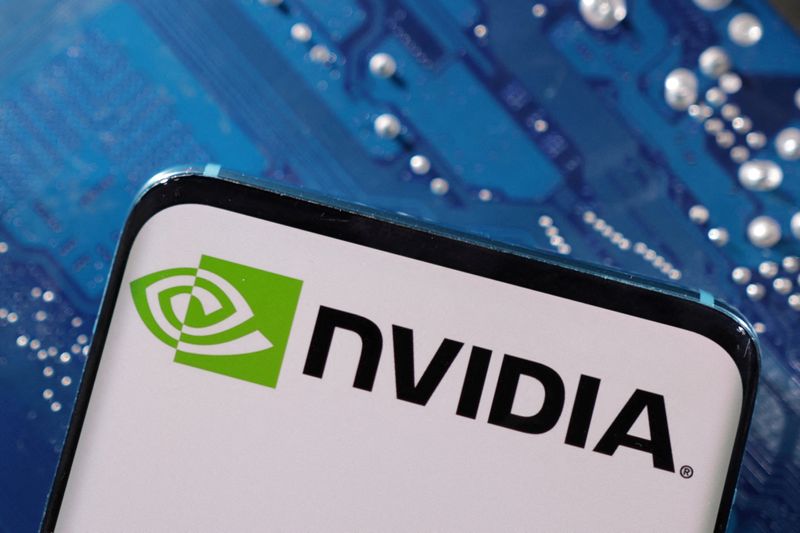On Monday, Bank of America (NYSE:BAC) (BofA) addressed concerns surrounding NVIDIA's (NASDAQ:NVDA) next-generation Blackwell platform, specifically the high power consumption of certain high-end configurations. Despite these issues and discussions about a potential slowdown in artificial intelligence (AI) scaling, BofA remains optimistic about NVIDIA's solid positioning for the calendar year 2025 (CY25).
The analyst from BofA noted that while the rollout of NVIDIA's Blackwell, particularly the NVL-72 configuration, has been reported to encounter power challenges, this is not expected to significantly hinder the company's momentum in CY25. The demand for AI capacity remains high, and cloud customers are anticipated to continue deploying NVIDIA's AI solutions, including both Hopper and Blackwell, to meet this demand.
The industry's concerns about AI scaling slowing down are also deemed premature by BofA. As the AI sector is still in its early stages, occasional pauses for assessment are considered normal. NVIDIA is set to report its financial results on Wednesday, with sell-side consensus projecting FQ3 and FQ4 sales to reach $33.2 billion and $37 billion, respectively.
However, more optimistic investor expectations are set higher, at around $34 billion for FQ3, which is all Hopper, and $38 to $40 billion for FQ4, which includes a mix of Hopper and an estimated $4 to $6 billion from Blackwell.
Despite potential supply constraints and operational issues, such as those related to Blackwell's cooling systems, any negative impact on NVIDIA's outlook is expected to be temporary. BofA suggests monitoring NVIDIA's gross margins (GM), which need to remain between 73-74% to support the company's progress towards the bullish forecast of over $5 per share in earnings for FY26/CY25.
In other recent news, NVIDIA Corporation (NASDAQ:NVDA) has been the subject of several analyst reports. Rosenblatt Securities maintains a Buy rating on NVIDIA, with a price target of $200, expecting a positive earnings report. Revenue estimates for NVIDIA's third fiscal quarter were at $32.5 billion, with Non-GAAP EPS at $0.73. A transition from the current Hopper architecture to the slightly delayed Blackwell ramp is anticipated to drive growth.
Morgan Stanley (NYSE:MS) reiterated an Overweight rating on NVIDIA, highlighting the potential of the Blackwell product line. Evercore ISI also maintained a positive stance, citing accelerated bookings at cloud service providers. Jefferies raised its price target for NVIDIA, attributing this to the anticipated Blackwell product ramp-up and robust demand for NVIDIA's products.
HSBC forecasts NVIDIA's third-quarter sales to reach $35.3 billion, surpassing both management's guidance and consensus estimates. The firm's sales forecasts for the fourth quarter of fiscal year 2025 and the first quarter of fiscal year 2026 are $38.0 billion and $42.7 billion, respectively.
In collaboration with SoftBank (TYO:9984) Corp, NVIDIA has launched the world's first combined artificial intelligence and 5G telecommunications network, known as an artificial intelligence radio access network (AI-RAN). This development has potential applications in various sectors, including autonomous vehicles and robotics control. These are the recent developments surrounding NVIDIA.
InvestingPro Insights
NVIDIA's financial metrics and market performance align closely with Bank of America's optimistic outlook. According to InvestingPro data, NVIDIA boasts a remarkable revenue growth of 194.69% over the last twelve months, with a quarterly growth of 122.4% in Q2 2025. This robust growth trajectory supports BofA's confidence in NVIDIA's positioning for CY25.
The company's gross profit margin stands at an impressive 75.98%, slightly higher than BofA's suggested 73-74% range for supporting bullish forecasts. This indicates NVIDIA's strong ability to maintain profitability even as it navigates potential challenges with its Blackwell platform.
InvestingPro Tips highlight NVIDIA's strength in the semiconductor industry, noting its "impressive gross profit margins" and that it's a "prominent player in the Semiconductors & Semiconductor Equipment industry." These factors reinforce NVIDIA's capacity to overcome temporary setbacks and maintain its market leadership.
Additionally, NVIDIA's P/E ratio of 66.01 and its trading near its 52-week high suggest investor confidence in the company's future performance, aligning with the optimistic industry outlook described in the article.
For readers interested in a deeper analysis, InvestingPro offers 21 additional tips on NVIDIA, providing a comprehensive view of the company's financial health and market position.
This article was generated with the support of AI and reviewed by an editor. For more information see our T&C.
